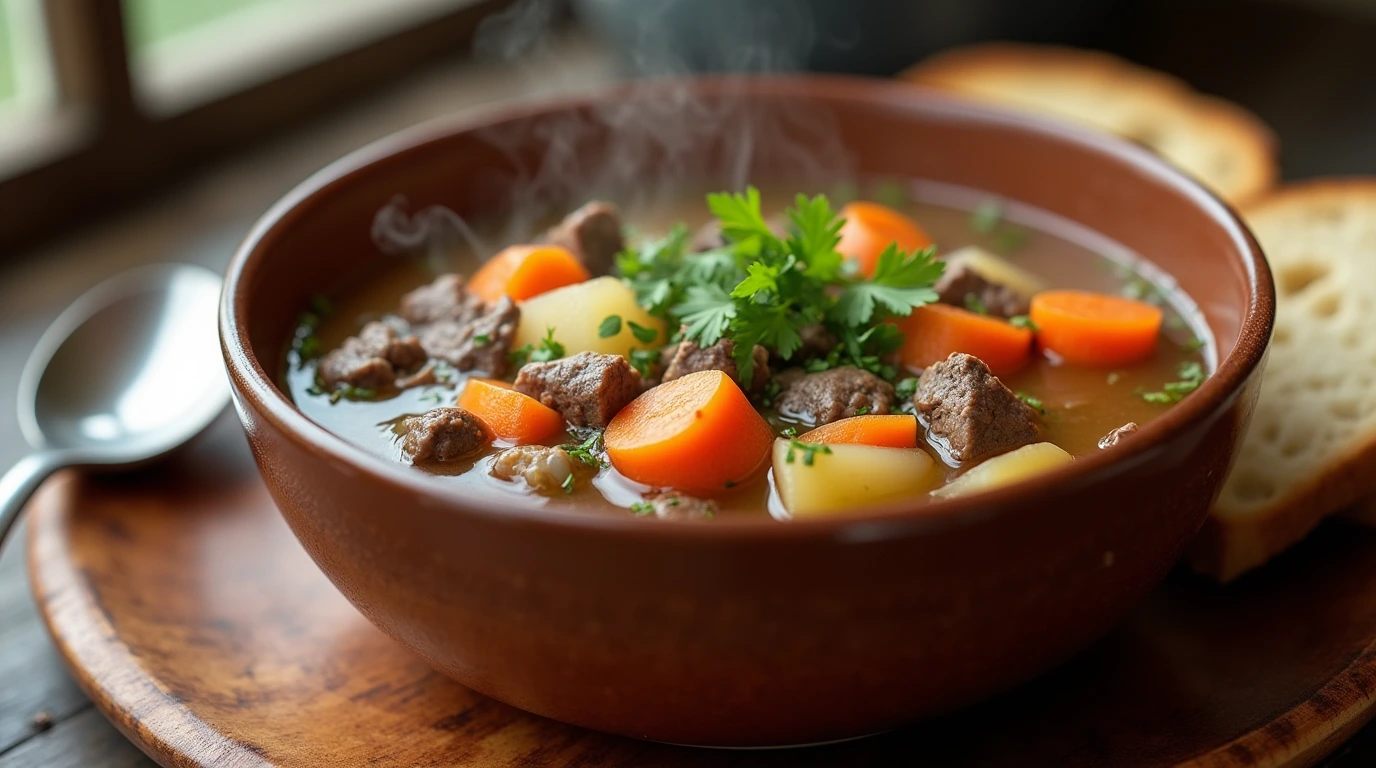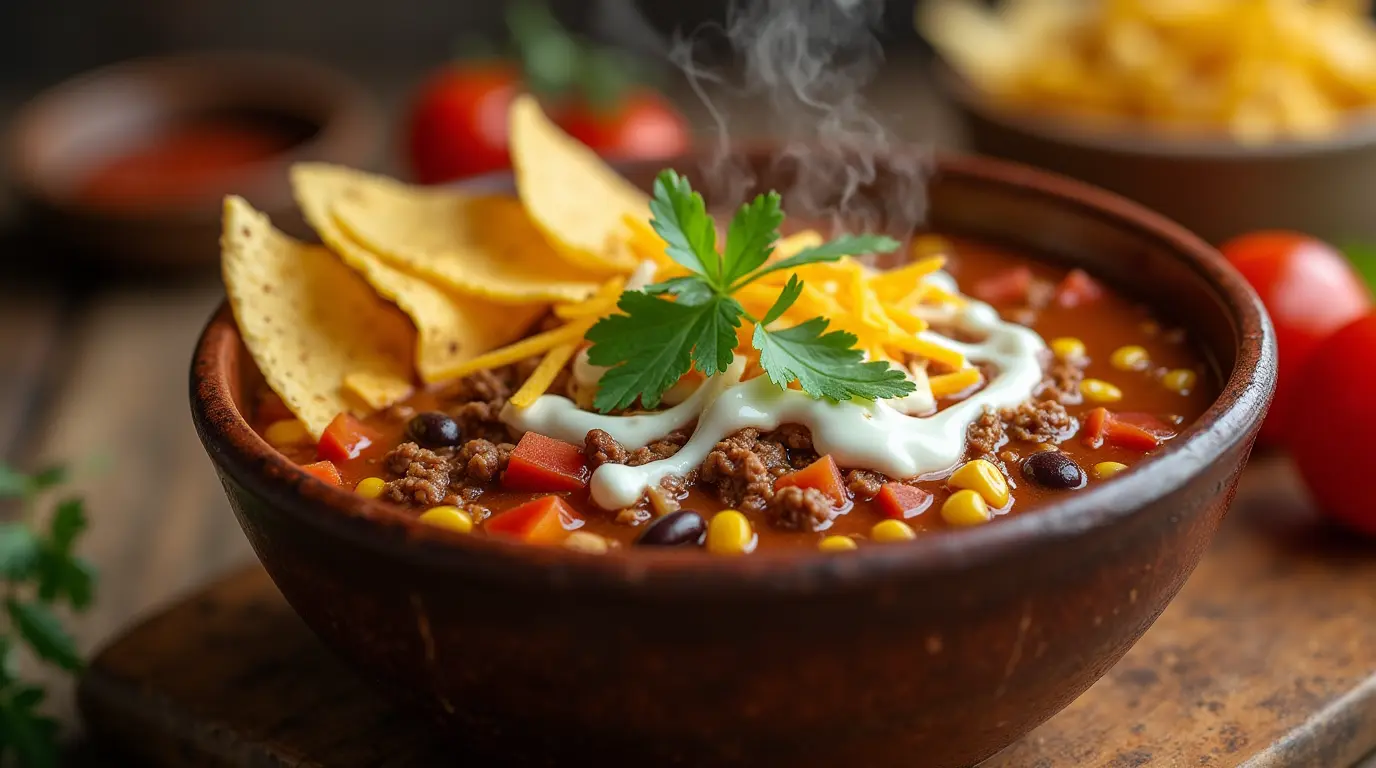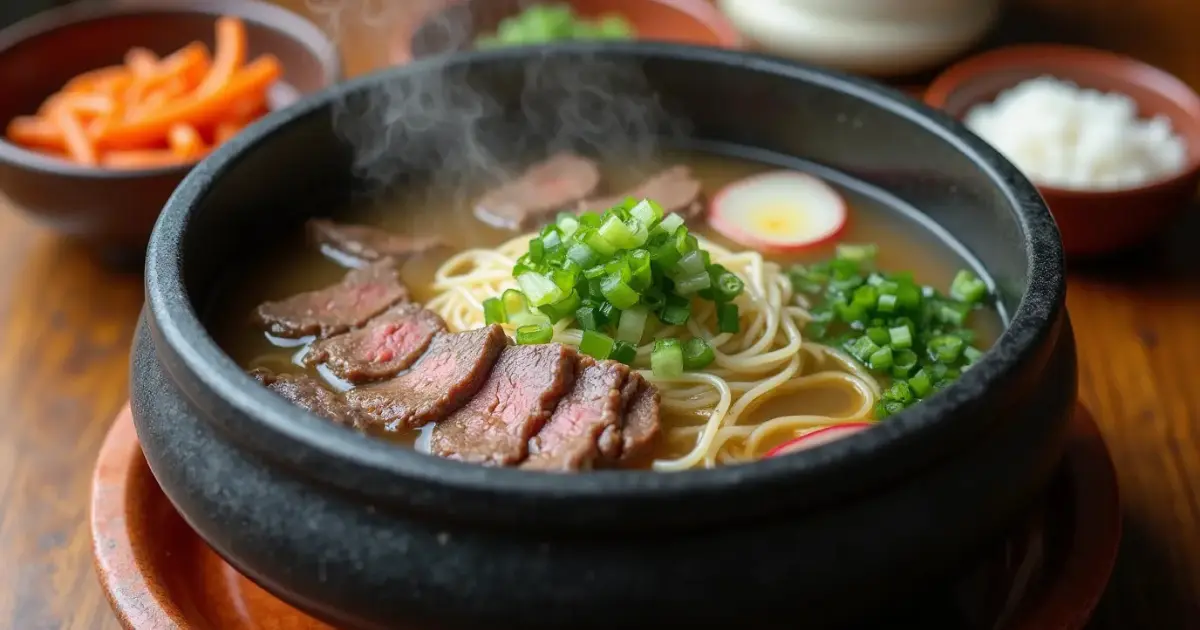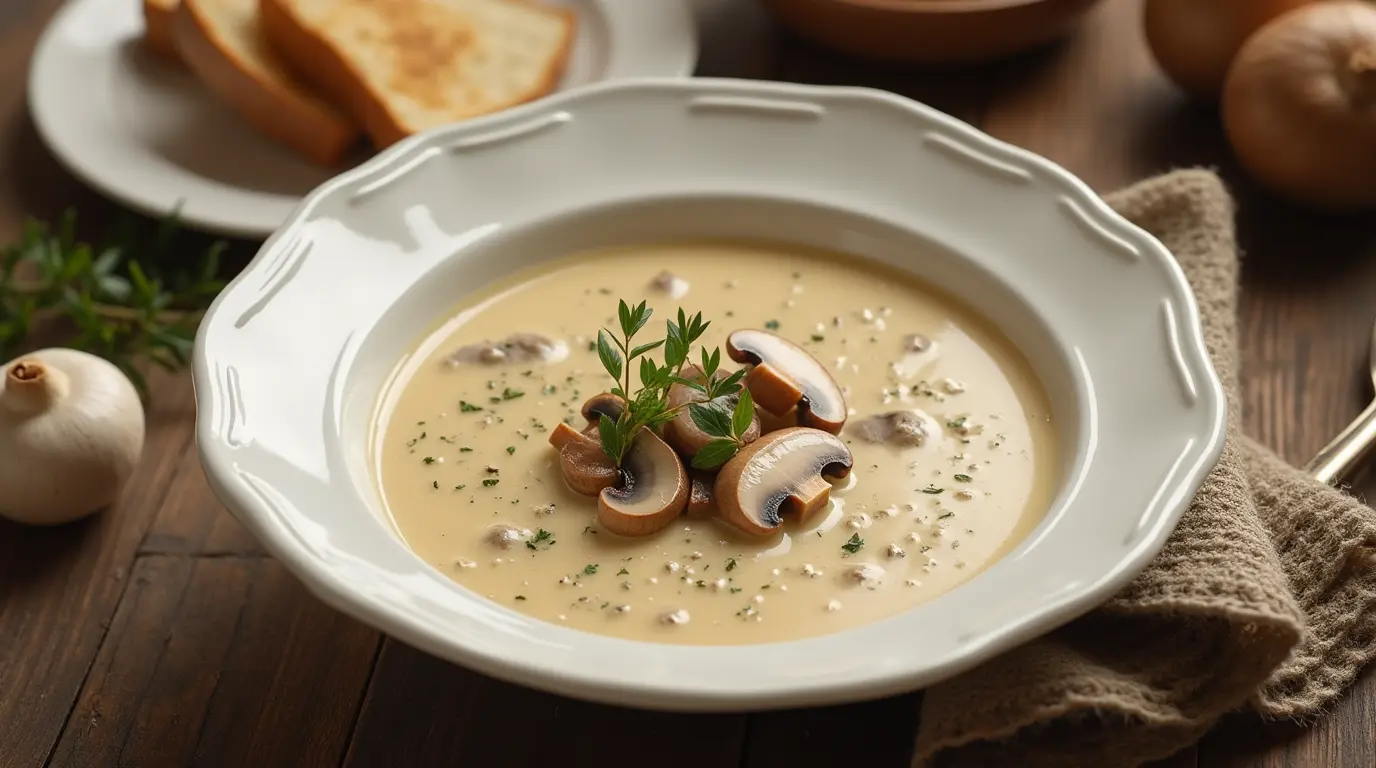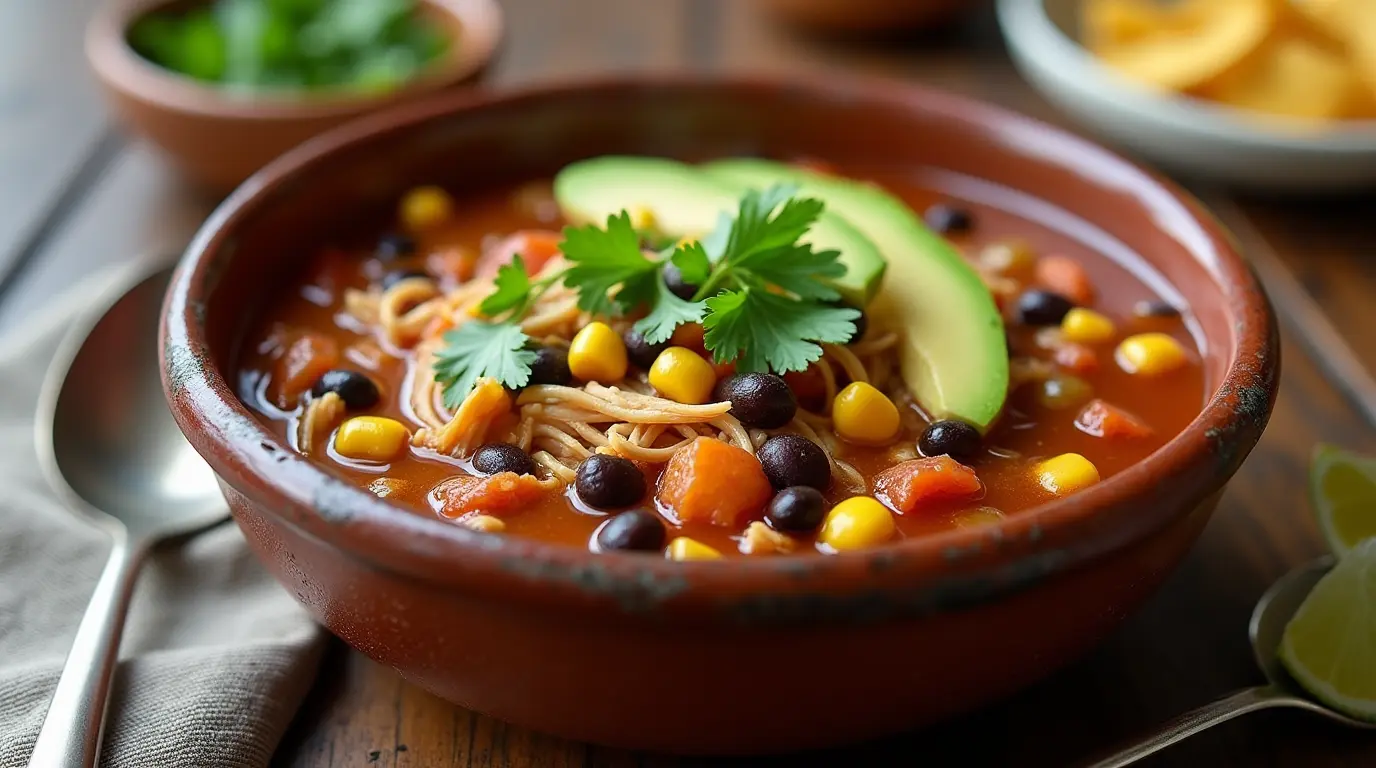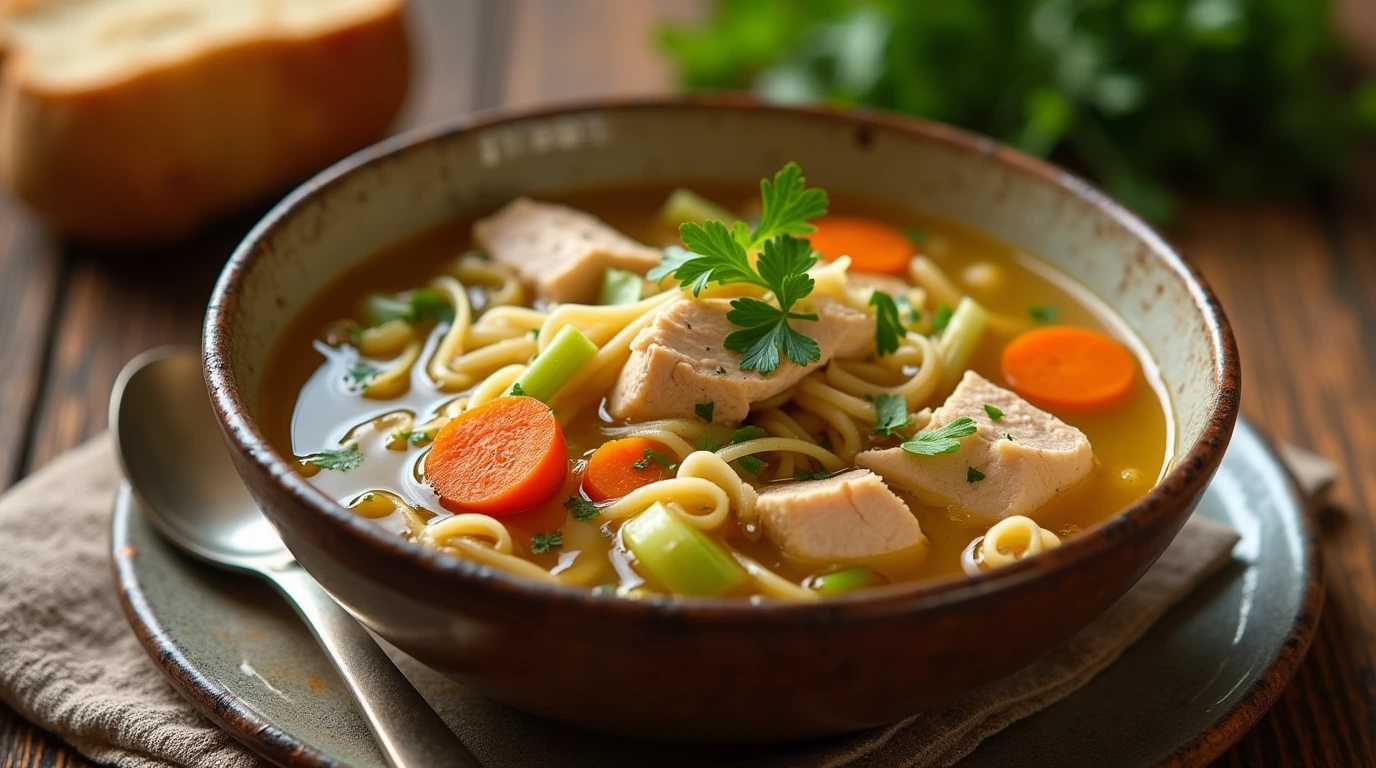Table of Contents
Growing up in a small Midwestern kitchen, I learned that comfort comes in a steaming bowl of old fashioned vegetable beef soup. The rich aroma would fill our home, making even the coldest winter day warm and cozy. This beloved vegetable beef soup recipe is more than just a meal—it’s a tradition passed down through generations.
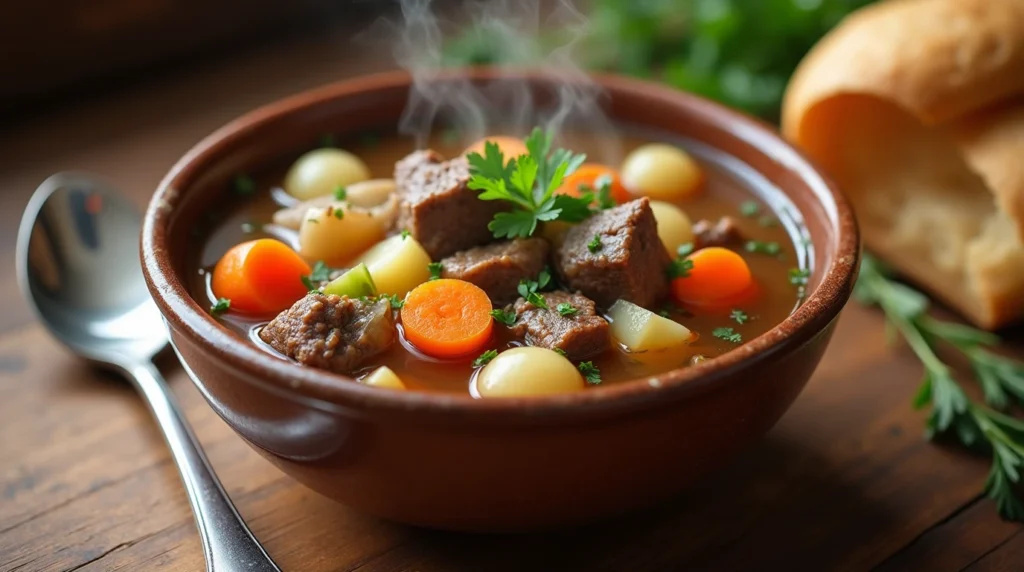
When you’re craving a hearty, nutritious meal that speaks to the soul of American home cooking, this old fashioned vegetable beef soup recipe delivers pure comfort. It’s filled with tender beef chunks and vibrant vegetables simmered to perfection. Each spoonful tells a story of family, tradition, and nourishment.
This classic soup has sustained families through tough times, providing warmth and sustenance with its simple yet robust ingredients. Whether you’re looking for a nostalgic meal or a nutritious dinner option, this vegetable beef soup will become a staple in your kitchen.
Key Takeaways
- Discover a timeless comfort food recipe
- Learn about the rich culinary heritage of vegetable beef soup
- Explore a nutritious and satisfying meal option
- Master a versatile soup recipe adaptable to various tastes
- Understand the cultural significance of traditional home cooking
Understanding the Rich History of Vegetable Beef Soup
Beef and vegetable soup is more than a meal. It’s a journey through American food history, connecting families for generations. The old fashioned vegetable beef soup recipe shows how people adapted, found comfort, and shared meals.
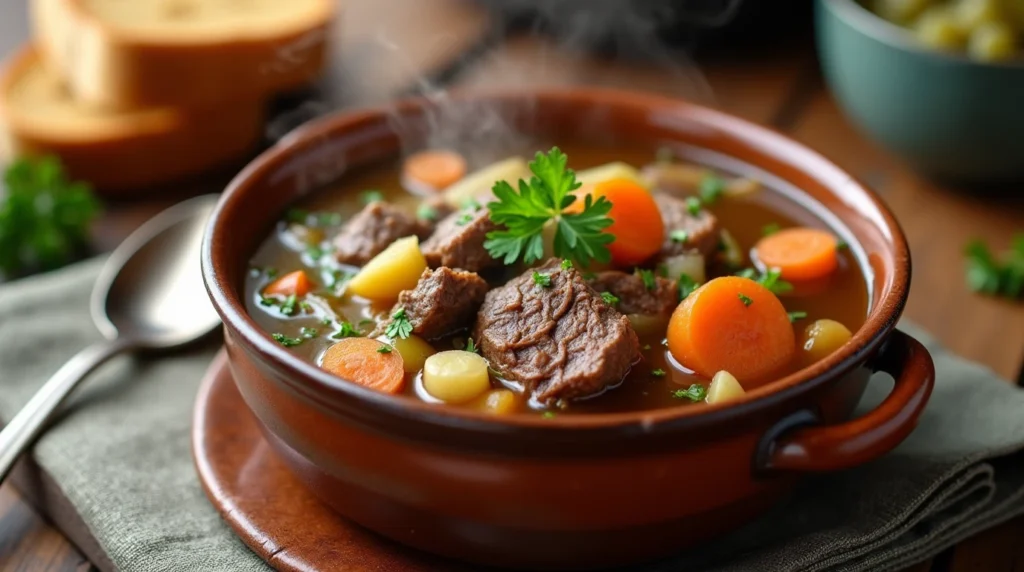
The soup’s roots go back to early immigrant communities. They made nourishing meals from simple ingredients. Families needed dishes that were affordable and could feed many with little.
Roots of a Timeless Recipe
Beef and vegetable soup came from practical cooking. European settlers brought ways to make big, filling meals. These meals used few ingredients but were full of nutrition.
- Colonial farmers pioneered slow-cooking methods
- Immigrants adapted recipes using local ingredients
- Soup became a symbol of home and comfort
Regional Flavor Traditions
The old fashioned vegetable beef soup recipe changes a lot across America. Each region made its own version, using local foods and cultural tastes.
| Region | Unique Soup Characteristics |
|---|---|
| Midwest | Hearty beef cuts, root vegetables |
| Southwest | Spicy peppers, corn-based additions |
| New England | Thick broth, potato-heavy recipe |
Knowing the soup’s history helps us see its value in American cuisine. It’s not just food; it’s a tradition that connects families across time.
Essential Ingredients for the Perfect Vegetable Beef Soup
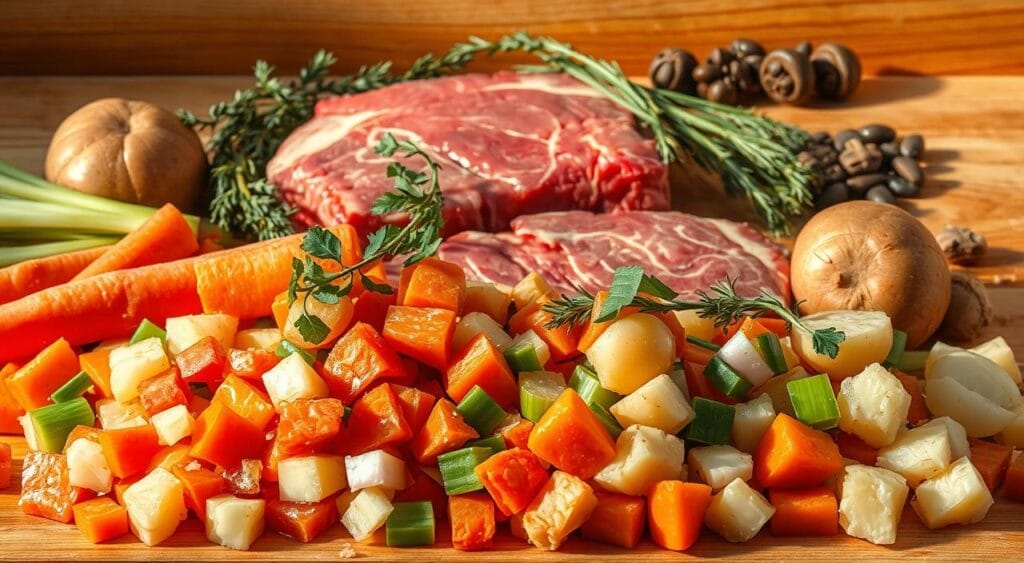
Making the best vegetable beef soup starts with top-notch ingredients. These ingredients add depth and flavor to your dish. Each part is key to turning a simple soup into a meal that warms your heart and body.
The base of a great vegetable beef soup is quality beef. Choose cuts with lots of marbling and tender meat. Chuck roast or beef short ribs add rich flavor and a strong base to your soup.
- Fresh vegetables with vibrant colors and crisp textures
- Lean, well-marbled beef cuts
- Aromatic herbs and robust seasonings
- Homemade or high-quality beef stock
For your vegetable beef soup, pick seasonal veggies for the best taste. Carrots, celery, potatoes, and green beans are a classic mix that goes well with beef. Fresh ingredients are essential for complex flavors.
Herbs and spices take your soup from good to great. Try adding:
- Dried thyme
- Bay leaves
- Fresh cracked black pepper
- Garlic powder
The key to a fantastic vegetable beef soup is balancing ingredients and letting flavors meld. Spend time browning meat, sautéing veggies, and simmering the soup. This way, you’ll get a truly unforgettable meal.
Selecting and Preparing the Best Cuts of Beef
Creating the perfect beef and vegetable soup starts with choosing the right cut of meat. Your soup’s flavor and texture depend on selecting quality beef. This beef should be able to withstand long cooking times.
The secret to an easy vegetable beef soup is knowing which beef cuts work best for slow-cooking. Not all beef cuts are created equal for soup preparation.
Top Beef Cuts for Soup Making
- Chuck Roast: Most recommended for its rich flavor and tender texture
- Bottom Round: Lean and budget-friendly option
- Brisket: Adds deep, robust flavor to beef and vegetable soup
Meat Preparation Techniques
Proper preparation can turn an ordinary soup into an extraordinary culinary experience. Start by trimming excess fat and cutting the meat into uniform, bite-sized pieces. This ensures even cooking and maximum flavor absorption.
“The key to a great soup is in the details of meat preparation.” – Professional Chef
Flavor Development Strategies
- Brown meat before adding to soup for deeper flavor
- Season generously with salt and pepper
- Consider marinating meat for 2-3 hours before cooking
By selecting the right cut and preparing it with care, you’ll create an easy vegetable beef soup. It will be both delicious and satisfying.
Fresh Vegetables That Make This Soup Special
Making a great vegetable beef soup begins with picking the right fresh vegetables. The secret to a tasty easy vegetable and beef soup is to choose vegetables that work well together. They should offer a great mix of flavors and nutrients.
- Carrots: Add natural sweetness and vibrant color
- Potatoes: Provide hearty texture and substance
- Celery: Contribute depth and aromatic base
- Tomatoes: Offer rich, tangy undertones
- Green beans: Bring crisp freshness
Using seasonal vegetables can make your easy vegetable and beef soup stand out. Winter soups might have strong root vegetables. Summer soups can have lighter, fresher garden produce.
| Vegetable | Cooking Time | Nutritional Value |
|---|---|---|
| Carrots | 25-30 minutes | High in Vitamin A |
| Potatoes | 20-25 minutes | Rich in Potassium |
| Green Beans | 10-15 minutes | Good Source of Fiber |
“The secret to a perfect vegetable beef soup is letting each vegetable shine while creating a harmonious blend of flavors.” – Chef Maria Rodriguez
Pro tip: Cut vegetables into similar-sized pieces for even cooking. This way, no vegetable gets mushy while others stay crunchy in your vegetable beef soup.
Old Fashioned Vegetable Beef Soup Recipe Step-by-Step
Making an easy vegetable beef soup needs patience and focus. This recipe will show you how to make a hearty, tasty meal. It warms your body and soul. Each step adds rich flavor and perfect texture.
Creating a great soup starts with basic techniques. We’ll break it down into simple steps. These steps turn simple ingredients into a memorable dish.
Preparing the Base
Start with top-quality beef. The meat’s quality greatly affects the soup’s taste. Follow these key steps:
- Choose chuck roast or beef stew meat
- Cut meat into 1-inch cubes
- Pat meat dry with paper towels
- Season generously with salt and pepper
Adding Vegetables at the Right Time
Timing is key when adding vegetables to your soup. Each veggie cooks differently to keep texture and flavor right.
| Vegetable | Add Time | Cooking Duration |
|---|---|---|
| Carrots | Early Stage | 45-60 minutes |
| Potatoes | Mid Cooking | 30-40 minutes |
| Peas | Final 10 Minutes | 5-10 minutes |
Seasoning and Simmering Guidelines
Build deep flavor with careful seasoning and slow simmering. Your soup needs slow cooking for the best taste.
- Brown meat first for maximum flavor development
- Use low and slow simmering technique
- Stir occasionally to prevent sticking
- Taste and adjust seasonings throughout cooking
Great soups come from passion, technique, and letting ingredients shine. Your homemade soup will be as good as any restaurant’s!
Make-Ahead Tips and Storage Instructions
Creating the best vegetable beef soup doesn’t mean you need to cook from scratch every time. With smart preparation, you can enjoy this easy vegetable and beef soup throughout the week.
Storing your homemade soup correctly ensures maximum flavor and safety. Follow these essential guidelines to keep your soup delicious and fresh:
- Cool the soup completely before storing
- Use airtight glass or plastic containers
- Refrigerate for up to 4 days
- Freeze for extended storage up to 3 months
When freezing your best vegetable beef soup, leave about an inch of space at the top of the container. This allows the soup to expand without cracking the container. Pro tip: Use freezer-safe bags for compact storage and easier thawing.
“Preparation is the secret to enjoying a hearty soup anytime!” – Home Cooking Wisdom
Reheating your easy vegetable and beef soup requires gentle warming. Thaw frozen soup in the refrigerator overnight, then reheat slowly on the stovetop. Stir occasionally to maintain consistent temperature and prevent scorching.
- Microwave in short intervals
- Stir frequently
- Add a splash of broth if needed
By mastering these make-ahead techniques, you’ll always have a comforting meal ready when hunger strikes.
Serving Suggestions and Perfect Pairings
To make your vegetable beef soup special, think about how you present it. The right presentation and sides can turn a simple meal into a memorable one.
Choosing the right sides and drinks can make your soup even better. It’s all about finding the perfect match for its rich flavors and hearty taste.
Traditional Accompaniments
Classic pairings can really highlight your vegetable beef soup. Here are some timeless choices:
- Freshly baked crusty sourdough bread
- Buttered cornbread
- Saltine or oyster crackers
- Homemade garlic toast
Modern Serving Ideas
Try new ways to serve your vegetable beef soup to impress everyone:
- Serve in individual bread bowls
- Top with fresh herb garnishes
- Add a dollop of sour cream
- Sprinkle crispy bacon bits
Wine and Bread Pairings
Choosing the right wine can make your soup even better. Strong red wines like Cabernet Sauvignon or Merlot go well with the soup’s meaty flavors.
“A great soup is about balance—matching flavors that dance together on your palate.”
Whether it’s a family dinner or a fancy party, these ideas will make your vegetable beef soup unforgettable.
Troubleshooting Common Soup Making Mistakes
Making the perfect easy vegetable beef soup can be tough. Even skilled cooks face problems that can ruin their soup. But, with some expert tips, you can fix your soup and make it delicious.
Common Soup Challenges and Solutions
- Oversalted Soup: If your soup is too salty, try these quick fixes:
- Add a peeled potato to absorb excess salt
- Dilute with unsalted broth or water
- Increase the volume of other ingredients
- Tough Meat: Prevent chewy beef by:
- Choosing the right cut of meat
- Cooking at low temperatures
- Allowing sufficient simmering time
Texture and consistency are key in an easy vegetable beef soup. If your soup is too thin, try these methods to thicken it:
| Thickening Method | Technique |
|---|---|
| Flour or Cornstarch | Mix with cold water, then stir into soup |
| Potato Mashing | Mash some cooked potatoes directly in the soup |
| Reduction | Simmer uncovered to naturally thicken |
“The secret to a great beef and vegetable soup is patience and attention to detail.” – Professional Chef
Vegetable doneness is important. Add softer veggies like carrots and potatoes early. Add delicate veggies like peas near the end to keep their texture and color.
Remember, practice makes perfect. Every batch of beef and vegetable soup is a chance to get better and find your own way of cooking.
Conclusion
Making an old fashioned vegetable beef soup is more than a recipe. It’s a way to connect with your family’s past. You’ve learned how to pick the best beef and veggies. Now, you can make a meal that your family will always remember.
Every step in making vegetable beef soup is a chance to enjoy comfort food. You’ve learned about its history and how to simmer it perfectly. Now, you know how simple ingredients can make a big difference in flavor.
Your journey with vegetable beef soup is just starting. As you keep making it, you’ll get better at mixing flavors and choosing ingredients. Don’t be afraid to try new things and share your soup with loved ones.
Great cooking is about passion, practice, and sharing meals with others. Your cooking journey is just beginning. Enjoy every moment of it.
FAQ
What makes an old fashioned vegetable beef soup different from other soup recipes?
An old fashioned vegetable beef soup is special because it’s made with simple, wholesome ingredients. It uses slow-cooked beef and farm-fresh vegetables. The broth is rich and flavorful, simmered for hours to get a deep taste and texture.
How long does it take to prepare vegetable beef soup?
It takes about 1.5 to 2.5 hours to make vegetable beef soup. This includes chopping vegetables, browning the beef, and simmering the soup. Quick versions can be ready in an hour, while traditional recipes take longer for richer flavors.
Can I make vegetable beef soup in a slow cooker?
Yes, you can! Brown the meat first, then put it in the slow cooker with vegetables and broth. Cooking on low for 6-8 hours makes the meat tender and the flavors blend beautifully.
What are the best beef cuts for vegetable beef soup?
The best cuts are chuck roast, beef stew meat, and short ribs. These cuts get tender during long cooking, adding rich flavor to your soup.
How can I make my vegetable beef soup more nutritious?
Add colorful vegetables like carrots, celery, kale, or spinach. Barley or quinoa can add protein and fiber. Use low-sodium broth and lean beef for a healthier soup without losing flavor.
How long can I store vegetable beef soup?
Store it in an airtight container in the fridge for 3-4 days. Freeze it for up to 3 months. Cool it completely before storing and reheat well before serving.
Can I make this soup vegetarian?
Yes, use plant-based proteins like lentils, beans, or meat substitutes. Replace beef broth with vegetable broth and add more vegetables. This keeps the soup hearty and flavorful.
What are some good bread or side dish pairings for vegetable beef soup?
Try crusty sourdough bread, cornbread, garlic bread, or buttermilk biscuits. A green salad or roasted vegetables also pair well, adding texture and nutrition.
